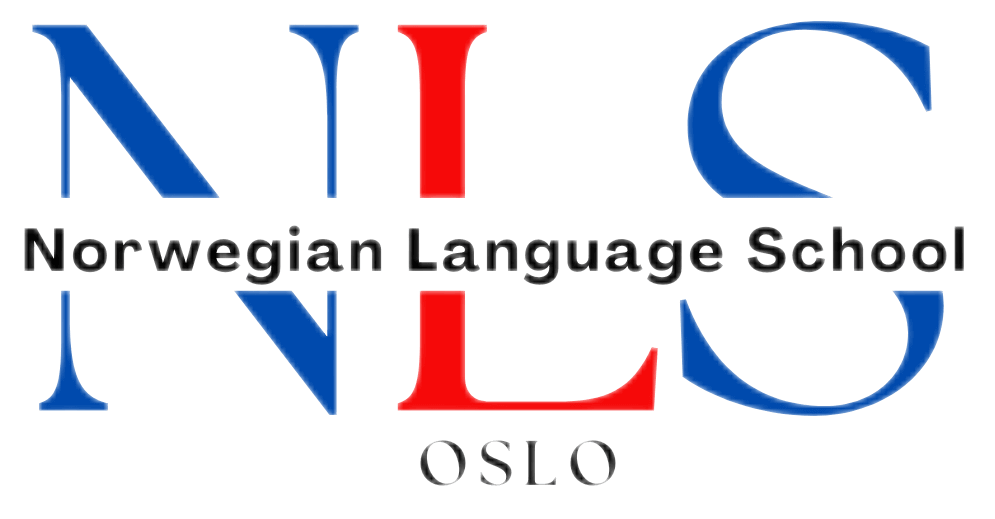

The Art of the Norwegian Sentence: Varying Structure for the Norskprøven
The Norskprøven, or the Norwegian test, serves as a pivotal assessment for non-native speakers wishing to demonstrate their proficiency in the Norwegian language. This examination is not merely a test of vocabulary or grammar; it encapsulates a comprehensive evaluation of one’s ability to communicate effectively in various contexts. As such, it is essential for individuals aiming to integrate into Norwegian society, whether for work, study, or personal reasons.
The test assesses four key language skills: reading, writing, listening, and speaking, each of which plays a crucial role in achieving a well-rounded command of the language. Preparing for the Norskprøven can be a daunting task, particularly for those who may not have had extensive exposure to Norwegian prior to their studies. However, with the right resources and guidance, candidates can navigate the complexities of the language with confidence.
One of the most critical aspects of mastering Norwegian is understanding sentence structure. A solid grasp of how sentences are constructed not only aids in comprehension but also enhances one’s ability to express thoughts clearly and effectively. This article will delve into the intricacies of Norwegian sentence structure, providing insights and strategies that will be invaluable for anyone preparing for the Norskprøven. Enroll now to secure your spot in the NLS Norwegian Language School’s Norskprøven preparation course!
Table of Contents
ToggleSummary
- The Norskprøven is a standardized test for Norwegian language proficiency, required for immigration and higher education in Norway.
- Sentence structure is crucial in Norwegian as it can affect the meaning and clarity of the message.
- Basic sentence structures in Norwegian include subject-verb-object, subject-object-verb, and verb-subject-object.
- Subordinate clauses are used to add complexity and detail to Norwegian sentences, often introduced by conjunctions like “som” and “når”.
- Adverbs and adjectives can be used to vary sentence structure and add depth to the message in Norwegian.
Understanding the importance of sentence structure in Norwegian
Sentence structure is fundamental to any language, serving as the framework upon which meaning is built. In Norwegian, as in many languages, the arrangement of words can significantly alter the intended message. A well-structured sentence allows for clarity and precision, enabling speakers and writers to convey their ideas without ambiguity.
For those preparing for the Norskprøven, mastering sentence structure is not merely an academic exercise; it is a vital skill that can influence performance across all sections of the test. Moreover, understanding sentence structure in Norwegian can enhance one’s overall language proficiency. It allows learners to engage more deeply with the language, facilitating better comprehension of spoken and written texts.
As candidates become more adept at constructing sentences, they will find themselves better equipped to tackle the various tasks presented in the Norskprøven. This foundational knowledge will not only aid in passing the test but will also serve as a cornerstone for effective communication in everyday life in Norway.
Basic sentence structures in Norwegian

At its core, Norwegian sentence structure follows a relatively straightforward pattern, often adhering to a subject-verb-object (SVO) format. This means that in a typical declarative sentence, the subject comes first, followed by the verb and then the object. For example, in the sentence “Jeg spiser eplet” (I eat the apple), “Jeg” (I) is the subject, “spiser” (eat) is the verb, and “eplet” (the apple) is the object.
This basic structure provides a solid foundation for learners as they begin to construct their own sentences. However, while SVO is prevalent in Norwegian, it is essential to recognise that variations can occur depending on context and emphasis. For instance, questions often require inversion of the subject and verb, leading to structures such as “Spiser du eplet?” (Are you eating the apple?).
Additionally, when using adverbs or other modifiers, the placement within a sentence can shift. Understanding these nuances is crucial for learners aiming to achieve fluency and accuracy in their writing and speaking.
The use of subordinate clauses in Norwegian sentences
Subordinate clauses play a significant role in enriching Norwegian sentences by adding depth and complexity. These clauses cannot stand alone as complete sentences; instead, they rely on a main clause to provide context and meaning. For example, in the sentence “Jeg tror at han kommer” (I believe that he is coming), “at han kommer” (that he is coming) is a subordinate clause that complements the main clause “Jeg tror” (I believe).
Mastering the use of subordinate clauses allows learners to express more intricate ideas and relationships between concepts. Incorporating subordinate clauses into one’s writing can elevate the quality of expression significantly. It enables speakers to convey conditions, reasons, or contrasts effectively.
For instance, using a conditional clause such as “Hvis det regner” (If it rains) can lead to more nuanced statements like “Hvis det regner, blir vi inne” (If it rains, we will stay inside). Such constructions are not only useful for everyday conversation but are also essential for achieving higher scores on the Norskprøven.
How to incorporate adverbs and adjectives to vary sentence structure
Adverbs and adjectives are powerful tools for adding variety and richness to sentence structure in Norwegian. Adjectives describe nouns and can be placed before or after them depending on stylistic choices and emphasis. For example, “den store hunden” (the big dog) places emphasis on the size of the dog by positioning “store” (big) before “hunden” (the dog).
Conversely, one might say “hunden er stor” (the dog is big) to focus on the state of being rather than on description. Adverbs, on the other hand, modify verbs and can significantly alter the tone or meaning of a sentence. For instance, saying “Han løper raskt” (He runs quickly) highlights the manner of running.
By varying the placement of adverbs within sentences—such as at the beginning or end—learners can create different emphases: “Raskt løper han” (Quickly he runs) shifts focus onto how he runs rather than who is running. Mastering these elements allows candidates to craft more engaging and dynamic sentences, which is particularly beneficial when preparing for the Norskprøven.
Using different sentence types for emphasis and clarity

In Norwegian, utilising different types of sentences—declarative, interrogative, imperative, and exclamatory—can enhance both emphasis and clarity in communication. Declarative sentences state facts or opinions and form the backbone of most conversations. For example, “Det er kaldt i dag” (It is cold today) conveys straightforward information.
Interrogative sentences are essential for asking questions and seeking information. They often require inversion of subject and verb or specific question words like “hva” (what) or “hvor” (where). An example would be “Hvor er bussen?” (Where is the bus?).
Imperative sentences are used for commands or requests; for instance, “Lukk døren!” (Close the door!) directs someone to take action. Exclamatory sentences express strong emotions or reactions; an example would be “For en vakker dag!” (What a beautiful day!). By mastering these different types of sentences, learners can communicate more effectively and adapt their language use according to context—an essential skill for success in the Norskprøven.
The impact of word order on meaning in Norwegian sentences
Word order in Norwegian is not only a matter of grammatical correctness but also significantly impacts meaning. While SVO is standard for declarative sentences, variations can lead to different interpretations. For instance, consider the sentence “Hun ser mannen” (She sees the man).
If one were to change it to “Mannen ser hun,” it shifts focus onto “mannen” (the man), suggesting that he is of particular importance in this context. Additionally, when using adverbial phrases or other modifiers, word order can further influence meaning. For example, “Hun alltid leser bøker” (She always reads books) places emphasis on her habitual action of reading.
However, if one were to say “Alltid leser hun bøker,” it highlights her consistent behaviour even more strongly. Understanding these subtleties is crucial for learners aiming to convey precise meanings and nuances in their speech and writing—skills that are vital for excelling in the Norskprøven.
The role of conjunctions in creating complex sentences in Norwegian
Conjunctions are essential tools for linking ideas and creating complex sentences in Norwegian. They allow speakers to connect clauses smoothly and logically, enhancing coherence in communication. Common conjunctions include “og” (and), “men” (but), “fordi” (because), and “eller” (or).
For instance, using “og” can combine two simple sentences: “Jeg liker kaffe” (I like coffee) and “Jeg liker te” (I like tea) into “Jeg liker kaffe og te” (I like coffee and tea). Moreover, subordinating conjunctions such as “fordi” introduce subordinate clauses that provide additional information or reasoning behind an action. An example would be “Jeg går hjem fordi jeg er trøtt” (I am going home because I am tired).
By mastering conjunctions and their appropriate usage, learners can create more sophisticated sentences that reflect complex thoughts and relationships—an important aspect when preparing for the Norskprøven.
Tips for practising and improving sentence structure in Norwegian
To improve sentence structure in Norwegian effectively, consistent practice is key. Engaging with various forms of written material—such as books, articles, and essays—can provide valuable insights into how native speakers construct their sentences. Observing different styles will help learners internalise various structures and expand their repertoire.
Additionally, writing exercises focused on specific structures can be beneficial. For instance, learners might practice creating sentences using subordinate clauses or varying their use of adjectives and adverbs. Peer feedback can also be invaluable; sharing written work with fellow learners or instructors allows for constructive criticism that can highlight areas for improvement.
Furthermore, speaking practice through conversation groups or language exchange partners can reinforce these skills in real-time communication.
Common mistakes to avoid in Norwegian sentence structure
As with any language learning process, certain pitfalls are common among learners of Norwegian when it comes to sentence structure. One frequent mistake involves incorrect word order—particularly when forming questions or using adverbs—which can lead to confusion or miscommunication. It is crucial for learners to remember that while SVO is standard for declarative sentences, variations are necessary for questions or when emphasising certain elements.
Another common error relates to overusing simple sentences instead of incorporating more complex structures with subordinate clauses or conjunctions. While simple sentences have their place, relying solely on them can make communication sound choppy or overly simplistic. Learners should strive to create varied sentence structures that reflect their understanding of more advanced grammatical concepts.
The art of mastering sentence structure for the Norskprøven
Mastering sentence structure is an art form that requires dedication and practice—especially when preparing for an important assessment like the Norskprøven. A solid understanding of how sentences are constructed not only enhances clarity but also enriches communication overall. By focusing on basic structures, incorporating subordinate clauses, utilising adverbs and adjectives effectively, and varying sentence types, learners can develop a nuanced command of Norwegian that will serve them well both in examinations and everyday interactions.
As candidates embark on their journey towards mastering Norwegian sentence structure, they should remain mindful of common pitfalls while actively seeking opportunities for practice and improvement. With perseverance and the right strategies in place, success on the Norskprøven—and beyond—is well within reach. Ultimately, embracing the intricacies of sentence structure will empower learners to express themselves with confidence and precision in their new language.
Register for the NLS Norskprøven preparation course at the Norwegian Language School now!
If you want to learn Norwegian, you can register for classes here. We look forward to hearing from you and helping you become fluent in Norwegian.





